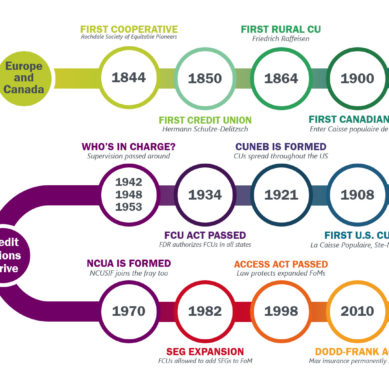
Last week, the National Credit Union Administration released the credit union system performance data for the fourth quarter of 2023. NCUA reported that the number of federally insured credit unions (FICU) declined to 4,604—156 fewer than there were as of the fourth quarter of 2022.
Many of those may have come from low-income designation credit unions, whose numbers dropped by 129 from 2,612 in 2022 to 2,483 in 2023. Meanwhile, the number of “complex” FICUs—those with total assets over $500 million—increased by 5 to 714.
Total assets of federally insured credit unions, NCUA reported, increased by a modest $88 billion, 4.1%. For comparison, assets grew by 5.2% in 2022, 11.7% in 2021, 17.7% in 2020, 7.8% in 2019, and 5.4% in 2018.
“The credit union system remains largely stable in its performance and remains resilient against a challenging interest rate and economic environment,” Chairman Todd M. Harper said. “However, the NCUA continues to see signs of financial strain on credit union balance sheets, along with growing consumer financial stress as reflected in the rising delinquency rate shown in the latest data. Credit union executives, administrators, and boards of directors must remain diligent in managing the safety-and-soundness and consumer financial protection risks within their institutions. Today’s marketplace requires active — not passive — management by all.”
Further consolidation is likely expected, as though total membership increased 4 million members over the last year—a positive sign—a closer inspection shows that growth primarily occurring among the largest credit unions. FICUs with assets of at least $1 billion were the only segment to see positive membership growth (5.2%). Every asset category below (<$10M, $10-50M, $50-100M, $100-500M, and $500M-$1B) experienced membership decline.
Credit union loan to share ratio continued its slow climb as well, reaching 85.2% by the end of the year, the first time it passed 85% since 2018.
For more quarterly data summary reports, visit the NCUA website.































































Chip Filson#1
godd summary with multi year comparisons. Helpful information. How many new members are indirect vs persons joinging up themselves–maybe compare # of new sharedraft accts to total of new members added?